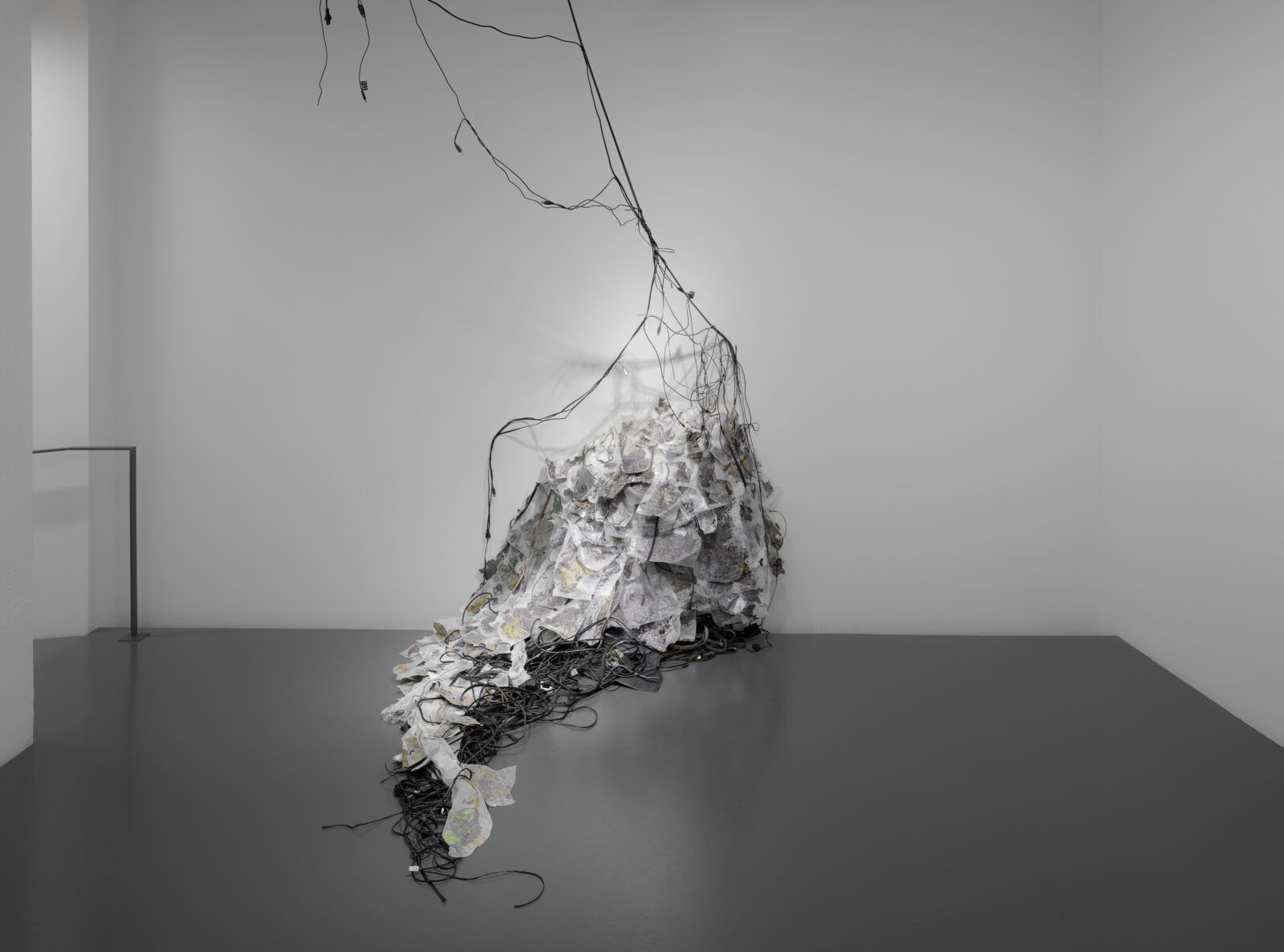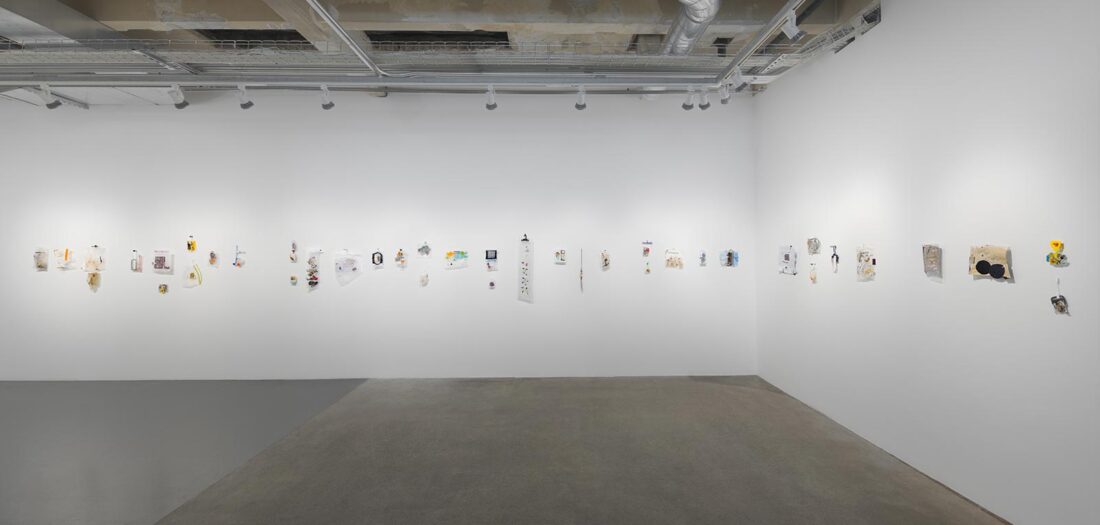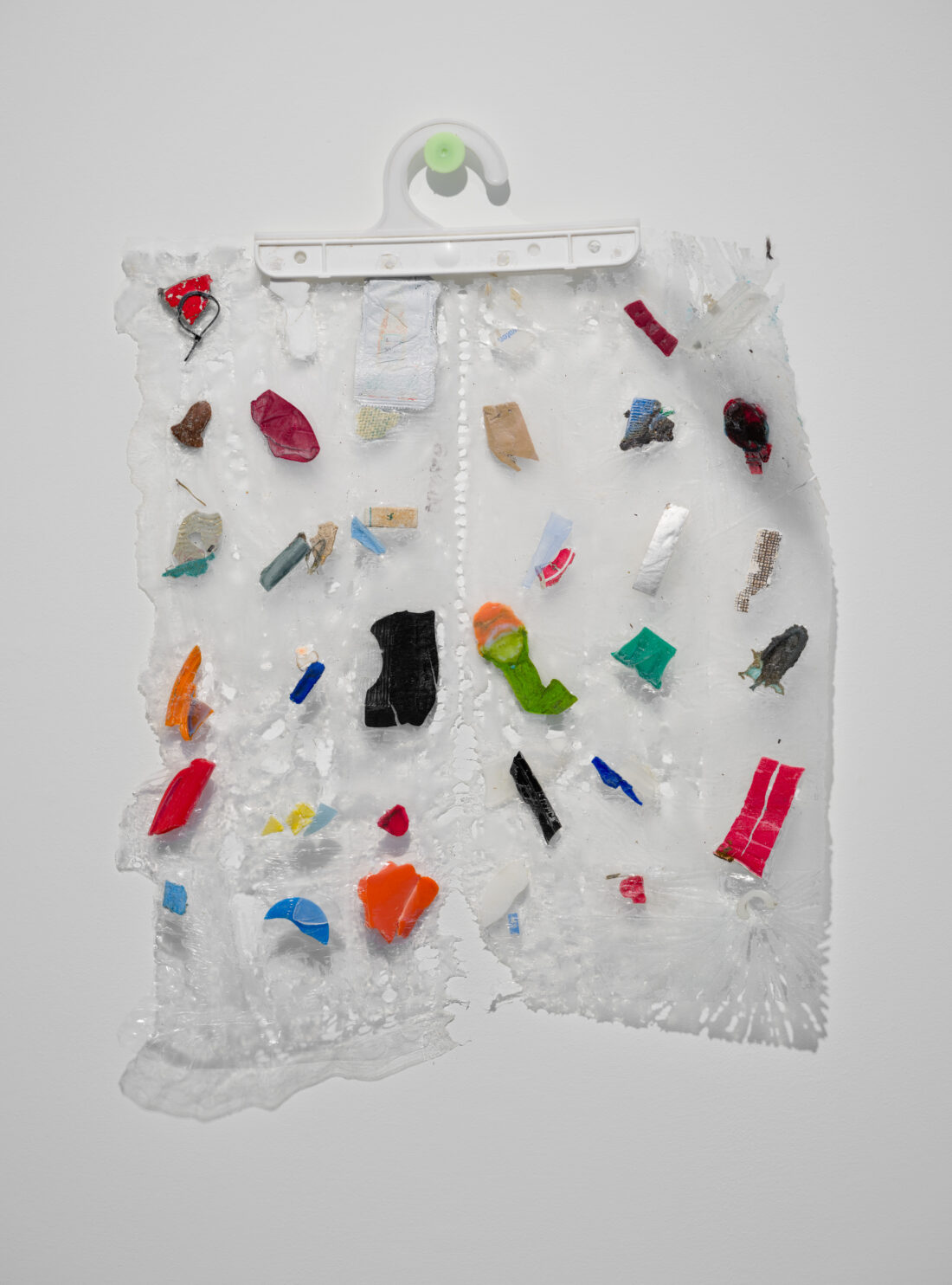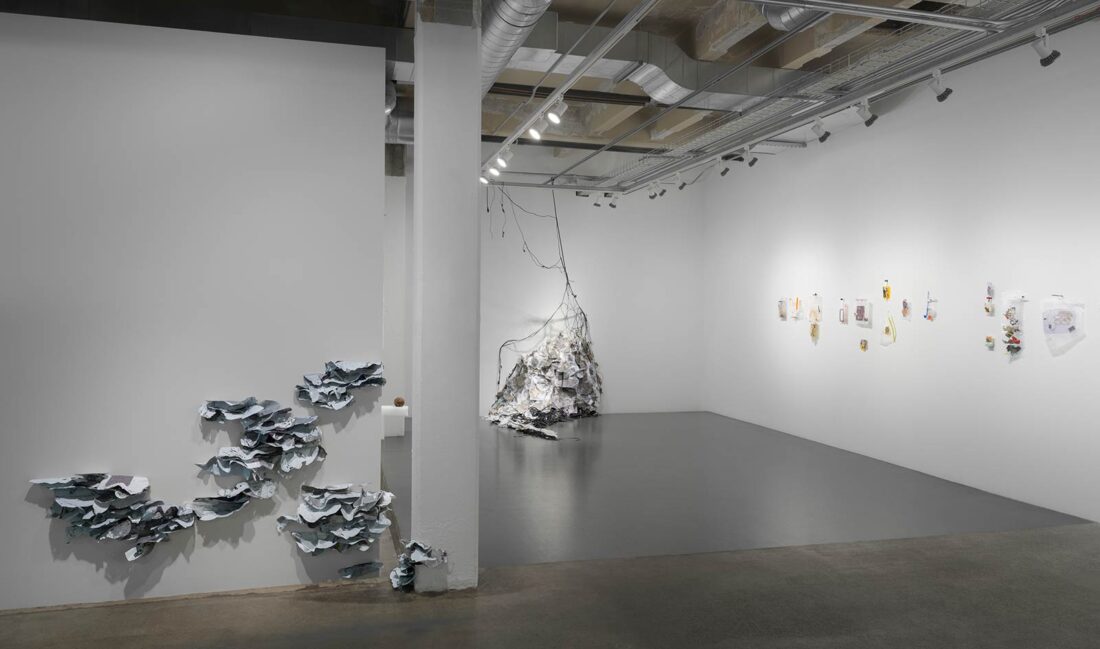Material Consequences: Maria Phillips on the objects and ideas in at what point…

During the pandemic, Maria Phillips used to walk along the beach near her home in West Seattle, picking up litter with her kids—often on Mondays when the sand was dotted with objects left behind from the weekend: masks, water bottles, cigarettes, press-on fingernails.
Beachcombing wasn’t new to her; she’d been cleaning the beaches in Florida for years, whenever she visited her parents there. “I’d bring in all the material,” Phillips says. “My mom wouldn’t let me empty it out in her apartment, so I would go to the stairwell and just lay it all out and organize it, whether it was colors, shapes, sizes. And then I’d photograph it.”
Trained as a metalsmith and jeweler, much of Phillips’ work in her early career revolved around found objects. Then a 2018 residency at Recology, an organization dedicated to waste reduction in Seattle and elsewhere on the West Coast, ignited a kind of ecological awakening in her. Since then, Phillips not only continues to work with Recology as a program manager for their Artists in Residence program, her work has taken on a mission: to engage people in conversation about the consequences of waste, plastic in particular.
“I’m only going to make from what I’m finding or have available,” she remembers telling herself as her environmental consciousness shifted. “I’m not buying supplies anymore.”

Phillips’ current exhibition at Gallery 4Culture, at what point…, presents a new body of work that provokes awareness of objects and the natural world. Much of it was made using material she found while “de-polluting” the surrounding Pioneer Square neighborhood. The exhibition includes roughly 40 “pick-up portraits,” each of which is composed of found items from a specific day’s haul, like a visual diary. Phillips thinks of them as sketches.

“At the beginning, I would just dump everything,” she says, recalling the early part of the process for these pieces. “And then it got to a point where it was interesting to look at the pieces. They started to get a little more curated, a little bit more artful, where it was like, Oh, okay, what objects am I looking at? What colors am I looking at?” Some days she makes colorful, beautiful compositions from garbage. Other days not so much: “This just needs to look ugly, because it is ugly.”
Phillips fixed each of the “pick-up portraits” by melting them between found layers of plastic packaging, like the baggies used for food or clothing ordered online. “There’s a randomness in the heat process—what’s going to melt, what’s not going to melt, what’s going to blend,” she says. “It’s almost like printmaking in a way. You have a sense of what’s going to happen, but there’s always these beautiful accidents, randomness that can take place.” (Visit the gallery and see how close you have to get to these portraits before you start to recognize their components.)
at what point… also includes several larger works, including an installation that resembles a huge cluster of mushrooms growing out of the wall—made from plastic Amazon shipping bags—and a pair of pieces made from balls Phillips found at the park. An unwound baseball drapes delicately on the wall, its recycled plastic and cork core held up by a Styrofoam plinth. Another deconstructed ball (a soccer ball, perhaps) also sits on a block of foam; Phillips’ dog tore off its outer layer, revealing a mass of fine threads.
“It was just beautiful,” Phillips says of the moment she first saw the peeled ball. She took the ball from the dog. “He was so mad! I put it on a shelf and he would just sit there—and I’m like, ‘Sorry, babe, you made art and it’s done.’”

For Phillips, focusing on plastic and waste in her work is not about steeping herself in doom and gloom. It’s about seeking out solutions and becoming part of them. “What’s the positive path? What are the innovations?” she asks. “Rather than going to the very dark side, let’s learn. Let’s turn it around.”
Phillips finds inspiration in the time before plastics, in the early 1900s, when immigrants would collect discarded glass, rags, broken tools, “things that they could repair, repurpose, resell.” She pauses before continuing optimistically: “I think we’re going to get back there.”
She points out how repair can make something more beautiful, like Japanese kintsugi fixing a broken piece of pottery with gold or staples, or the generations-old wooden spoon she fixed in her kitchen.
Phillips is thrilled to be among a growing movement of artists working with discarded materials, coming from so many different angles and backgrounds to help forge pathways to change.
“Let’s get creative,” she says.
Maria Phillips’ exhibition at what point… is on view at Gallery 4Culture through May 30.
